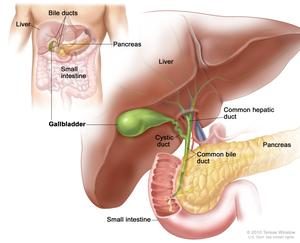By Cat Troiano
According to the Centers for Disease Control and Prevention (CDC), approximately 1.1 million Americans are living with human immunodeficiency virus (HIV), but one out of every seven of these individuals is unaware that he or she has the illness. When isolating those in the 13 to 24 year age group, the proportion of those who do not know that they have HIV jumps to more than 50 percent. The CDC also estimates that 50,000 new cases of HIV are diagnosed each year. By adhering to testing recommendations, a diagnosis of HIV is no longer considered a death sentence as it was during the 1980s. Today, once HIV is detected, available treatment can effectively manage the disease and empower many patients to live full and productive lives.
What Is HIV?
HIV is a virus that attacks the T-cells of the body’s immune system. T-cells are a type of white blood cell known as lymphocytes. The primary function of T-cells is to seek out and destroy pathogens as well as unhealthy cells, such as cancer cells. When the virus invades a T-cell, it replicates within the cell and destroys it. As HIV continues its attack, more and more of these T-cells are destroyed, resulting in a weakened immune system that can no longer fight off infections and certain cancers. By that point, once the T-cell count has dropped lower than 200 cells per millimeter, the disease has led to acquired immunodeficiency syndrome, or AIDS, which is the third and final stage in the HIV progression.
HIV Testing Guidelines
Although some patients who contract HIV may experience bouts of generalized symptoms similar to those of influenza, others remain asymptomatic during the earlier two stages of the disease. The only way to make a definitive diagnosis of HIV is through laboratory testing. The CDC currently advises routine HIV testing for every patient at least once between the ages of 13 and 64 years as well as for all pregnant women.
All patients should also be assessed for risk factors, which include the following:
• Having male to male sexual relations
• Having sexual relations with an HIV-positive partner
• Having sexual relations with someone without knowing that individual’s sexual history or HIV status
• Use of intravenous drugs, especially if sharing needles and other supplies with other individuals
• Previously diagnosed with a sexually-transmitted disease, hepatitis B, hepatitis C or tuberculosis
• Being a healthcare worker who may potentially have direct exposure to the blood of an HIV-positive patient
• Receiving a blood transfusion prior to 1985
Patients who carry any of these risk factors should be tested at least once annually.
HIV Antigen/Antibody Test
The HIV antigen/antibody test is the preferred laboratory test for initial HIV screening. When a patient is exposed to a bacteria or virus, which is known as an antigen, his or her immune system generates antibodies, also known as immunoglobulin, to neutralize the invading pathogen. The HIV antigen is known as p24. The HIV antigen/antibody test detects the level of p24 as well as two HIV antibodies, which are HIV-1 and HIV-2, the former of which is the more prevalent HIV antibody in the United States. Due to the test’s ability to detect p24, HIV can be detected in its earliest stage, as early as two to six weeks post patient exposure.
HIV Antibody Test
Any HIV antibody test that is performed in the United States is able to detect the presence of HIV-1 antibodies. This test can detect HIV as early as three to twelve weeks post patient exposure. Performance of any HIV screening test too soon after patient exposure can produce false-negative results. Once a patient tests positive on an HIV antigen/antibody test, the CDC recommends a follow up test with an HIV antibody test to confirm diagnosis. If both tests yield positive results, then the patient is considered HIV-positive, and treatment options will be presented by the patient’s physician. If the two test results do not concur, then ordering an HIV nucleic acid test is advised.
HIV Nucleic Acid Test (NAT)
The HIV nucleic acid test, which is also referred to as an HIV RNA quantitative test, screens for the actual virus in a blood sample by evaluating the level of HIV genetic RNA material. If the HIV antigen/antibody and the HIV antibody test results do not both yield positive results, this test can verify a patient’s HIV status.
Once a patient is diagnosed with HIV, the HIV NAT can be ordered to establish a baseline value of the individual’s viral load. The HIV NAT test is a useful method for monitoring that patient’s viral load levels periodically to determine the efficacy of their treatment protocol. The result of an HIV NAT is expressed as the quantity of HIV copies per milliliter of blood. When a patient’s treatment is effective, the number of copies/ml declines. Once that number drops lower than 200 copies/ml on a consistent basis, then the virus is said to be suppressed. This does not mean that the patient is cured of HIV. Rather, it indicates that the HIV viral load has reduced to undetectable levels, and the disease progression has been dramatically slowed.
Treatment Options
There is still no vaccine available to prevent HIV infection. However, those who are at significantly high risk for HIV have the option of taking a daily medication that has been shown to be effective at reducing their chances of HIV infection. This preventative treatment is known as pre-exposure prophylaxis, or PrEP.
Preventative treatment can also be administered on an emergency basis to individuals who suspect that they were exposed to HIV within the previous 72 hours. For example, if a victim of sexual assault begins taking the medication as soon as possible within 72 hours of the incident for 28 days, the risk of HIV infection declines. Such preventative treatment is known as post-exposure prophylaxis, or PEP.
There is no cure for HIV, but the disease can be controlled through antiretroviral therapy (ART). When positive test results confirm an HIV diagnosis in its earlier stage, patients who undergo this method of treatment and monitor their condition closely under their physicians’ recommendations can reduce their viral load to undetectable levels. This retards the progression of the disease, staving off the development of AIDS and enabling patients to live normally for years.
According to the World Health Organization, the rate of HIV and AIDS-related deaths worldwide has been reduced by more than half that of 2004 when the rate peaked. Screening patients for HIV enables earlier treatment with ART, which ultimately saves lives.
 Image courtesy of the National Institutes of Health
Image courtesy of the National Institutes of Health